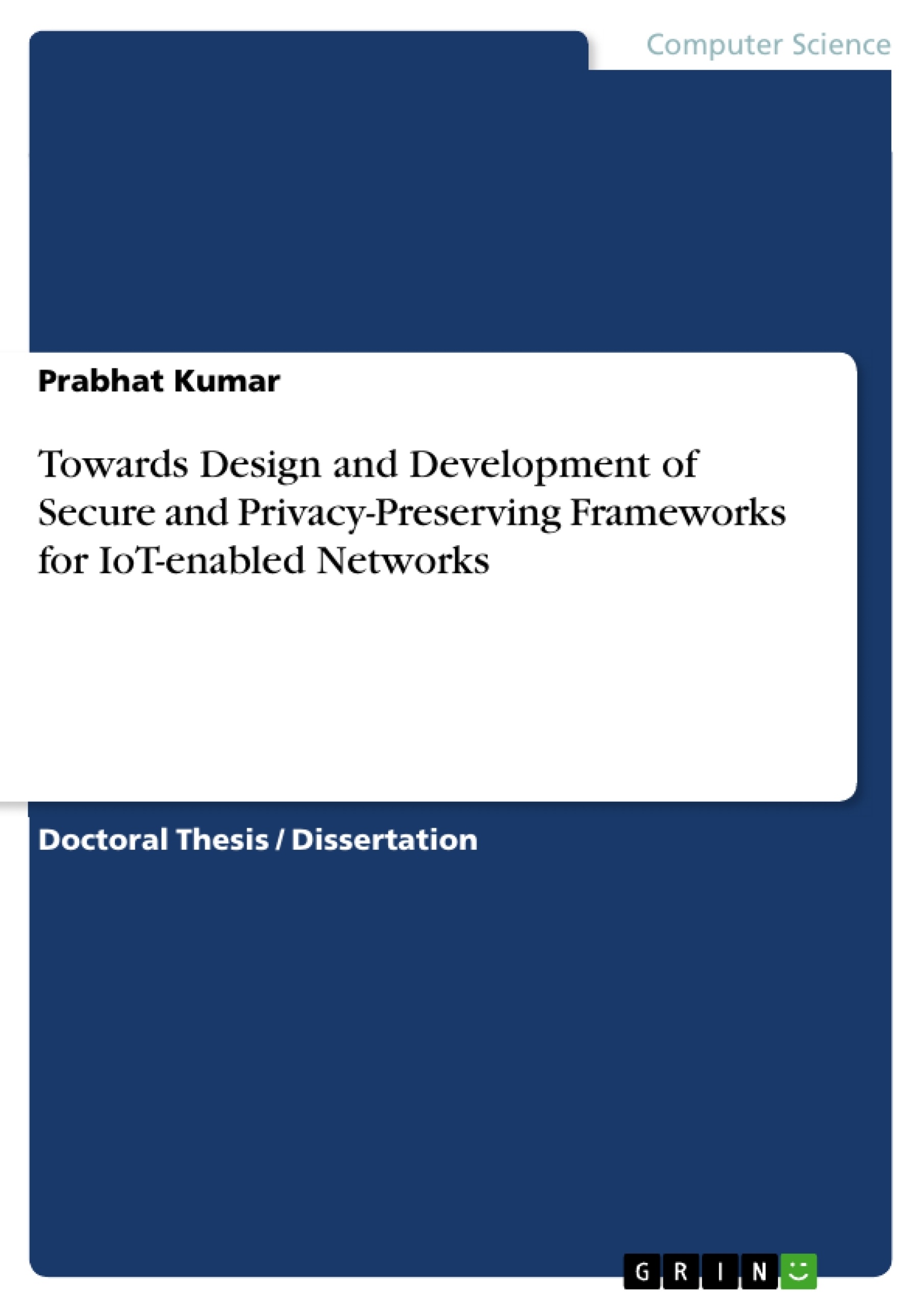With the advancement of low-cost and low energy-consuming sensors, the Internet of Things (IoT) is building a network of Internet-enabled devices. The concept of IoT is employed in almost all fields such as healthcare, smart cities, smart grids, energy distribution, agriculture, and even transportation. In a typical IoT-enabled network, smart sensors are geographically distributed to collect and process data within a smart infrastructure using an open channel, the Internet. However, the use of the Internet brings inherent vulnerabilities related to security (e.g., IoT devices can be compromised using advanced hacking techniques) and privacy (e.g., adversary performing inference and data poisoning attacks). Intrusion Detection System (IDS) and Cyber Threat Intelligence (CTI) are the two most extensively used techniques in IoT-enabled networks to safeguard the integrity and availability of sensitive smart systems. However, the presence of a large volume of data i.e., dimensionality curse and cloud-based centralized deployment mechanism hurts the IDS performance in terms of intrusion detection tasks and increased latency for data processing. On the other hand, modelling CTI is challenging due to the limited labels of cyber threat sources, and analysing these sources to extract relevant threat information manually is a time-consuming and error-prone procedure that necessitates a large investment of resources.
This thesis provides substantial contributions to research on the building of a distributed IDS, a hybrid feature selection approach, an automated CTI Modelling and Identification scheme, and a deep privacy-encoding module for enhancing security and privacy of IoT-enabled networks.
Inhaltsverzeichnis (Table of Contents)
- Chapter 1: Introduction
- 1.1 Motivation
- 1.2 Challenges in IoT Security and Privacy
- 1.3 Research Contributions
- 1.4 Organization of Thesis
- Chapter 2: Related Work
- 2.1 Introduction
- 2.2 Security Threats and Attacks in IoT
- 2.3 Existing Privacy-Preserving Techniques
- 2.4 Existing Solutions for IoT Security
- 2.5 Summary
- Chapter 3: Secure Authentication and Access Control in IoT
- 3.1 Introduction
- 3.2 Secure Authentication Scheme for IoT Devices
- 3.2.1 System Model and Assumptions
- 3.2.2 Proposed Authentication Scheme
- 3.2.3 Security Analysis
- 3.3 Secure Access Control Framework for IoT Networks
- 3.3.1 Design Objectives
- 3.3.2 Proposed Access Control Framework
- 3.3.3 Implementation and Evaluation
- 3.4 Summary
- Chapter 4: Privacy-Preserving Data Collection and Aggregation in IoT
- 4.1 Introduction
- 4.2 Privacy-Preserving Data Collection Framework
- 4.2.1 Design Considerations
- 4.2.2 Proposed Data Collection Framework
- 4.2.3 Evaluation and Performance Analysis
- 4.3 Secure and Privacy-Preserving Data Aggregation Technique
- 4.3.1 Design Principles
- 4.3.2 Proposed Aggregation Technique
- 4.3.3 Security and Privacy Analysis
- 4.4 Summary
- Chapter 5: Conclusion and Future Directions
Zielsetzung und Themenschwerpunkte (Objectives and Key Themes)
This thesis explores the design and development of secure and privacy-preserving frameworks for Internet of Things (IoT)-enabled networks. The focus is on addressing the unique challenges posed by the inherent characteristics of IoT systems, such as resource constraints, heterogeneous devices, and data sensitivity.
- Secure Authentication and Access Control
- Privacy-Preserving Data Collection and Aggregation
- Security and Privacy Threats in IoT
- Design and Implementation of Secure Frameworks
- Performance Evaluation and Analysis
Zusammenfassung der Kapitel (Chapter Summaries)
Chapter 1: Introduction provides an overview of the research topic, highlighting the motivation, challenges, contributions, and thesis organization.
Chapter 2: Related Work presents a comprehensive review of existing research on security and privacy in IoT. This chapter examines various security threats and attacks, existing privacy-preserving techniques, and existing solutions for IoT security.
Chapter 3: Secure Authentication and Access Control in IoT focuses on developing secure authentication and access control mechanisms for IoT devices. This chapter proposes novel schemes to address the authentication and authorization challenges in resource-constrained IoT environments.
Chapter 4: Privacy-Preserving Data Collection and Aggregation in IoT explores techniques for secure and privacy-preserving data collection and aggregation in IoT systems. This chapter presents frameworks and mechanisms to protect sensitive data while enabling effective data analysis.
Schlüsselwörter (Keywords)
This thesis focuses on the design and development of secure and privacy-preserving frameworks for Internet of Things (IoT)-enabled networks. Key concepts include secure authentication, access control, privacy-preserving data collection, aggregation, and security analysis.
- Quote paper
- Prabhat Kumar (Author), 2022, Towards Design and Development of Secure and Privacy-Preserving Frameworks for IoT-enabled Networks, Munich, GRIN Verlag, https://www.grin.com/document/1189176



